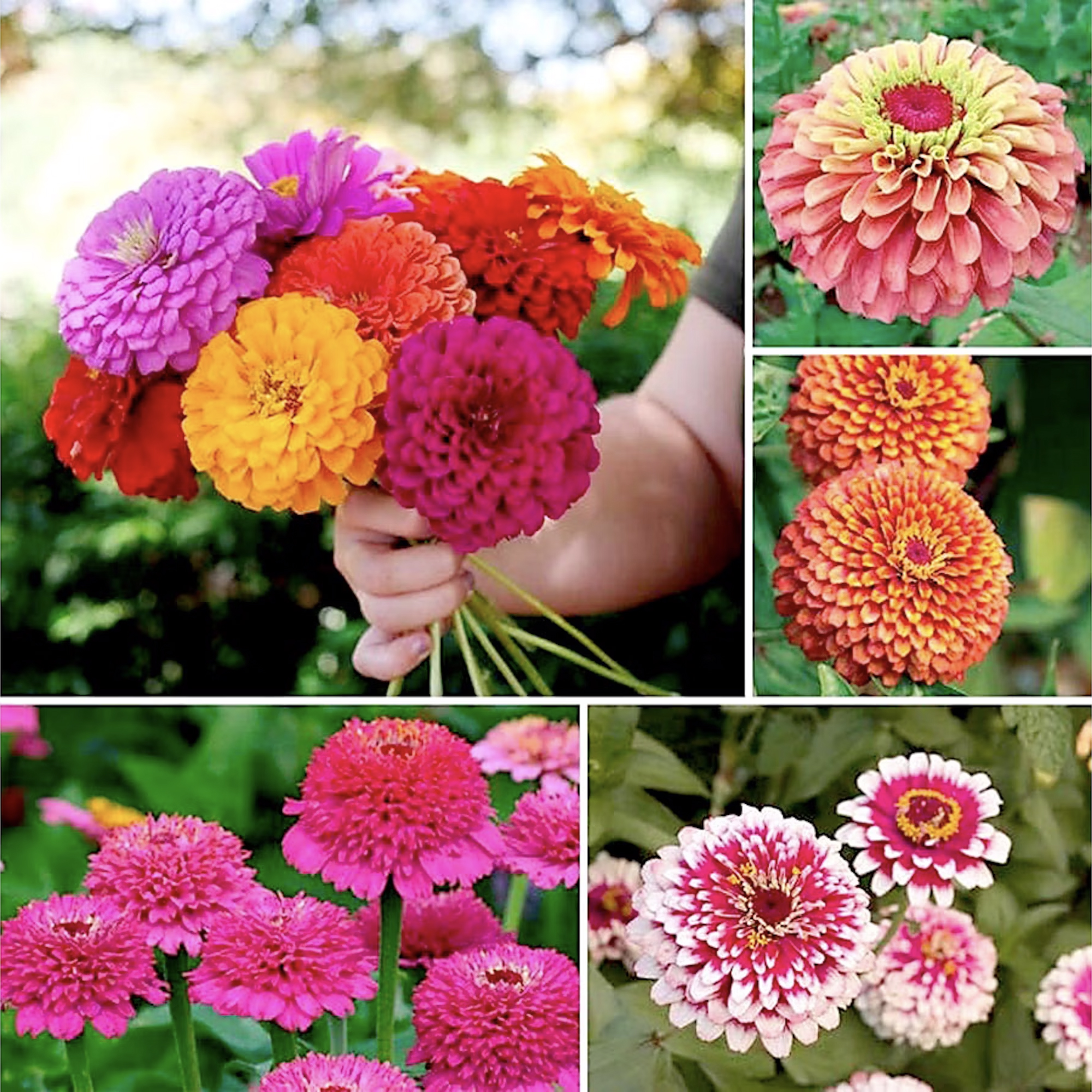Best Zinnia Companion Plants: Perfect Pairings For A Beautiful & Productive Garden
Zinnias make good neighbors with many other flowers and shrubs, and also offer a lot to support crops in the vegetable garden, boosting productivity.
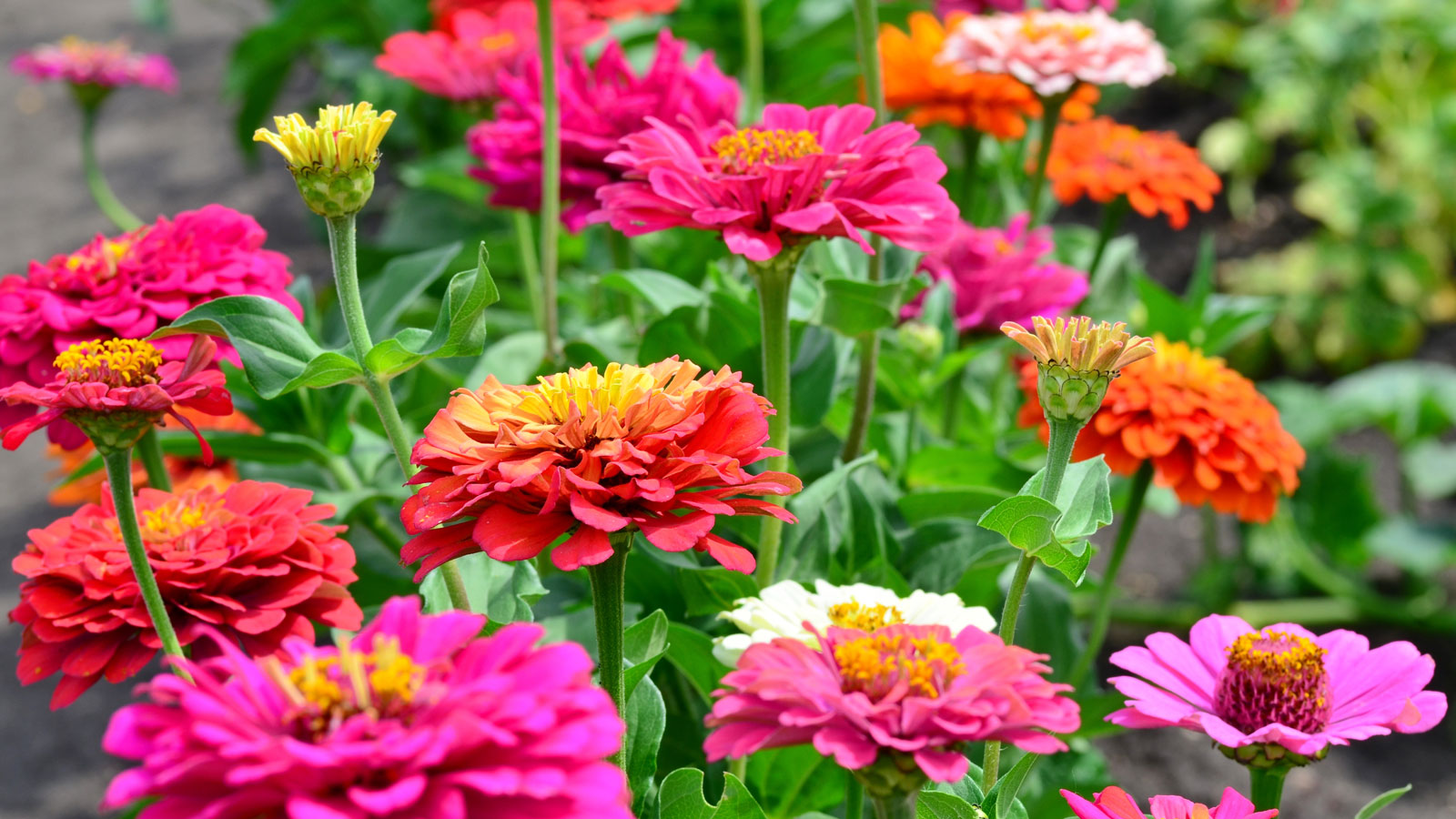

Zinnias are a welcome addition to almost any garden. Known for their vibrant colors, prolonged bloom time, and ability to attract pollinators, these hardy annual flowers are both beautiful and practical to grow. They have become increasingly popular for their usefulness as a companion plant, both in ornamental gardens and vegetable patches.
In this guide, we'll explore the best zinnia companion plants, their many benefits, and what you should avoid planting alongside them. Whether you're just learning how to grow zinnias for the first time or are a seasoned gardener, you'll find helpful tips for pairing zinnias in your garden beds.
Why Are Zinnias Good Companion Plants?
Companion planting refers to the process of planting several different garden species close together, so that they benefit each other in some way – such as by attracting pollinators, deterring pests, or improving soil conditions.
Zinnias are considered excellent companion plants thanks to several standout traits:
- They attract beneficial insects, serving as an invaluable source of nectar and pollen. This boosts populations of bees, butterflies, and predatory insects like ladybugs and lacewings.
- They serve as a trap crop, diverting the attention of troublesome insects away from more valuable garden species.
- They're low maintenance, which makes them easy to interplant with a variety of flowers and vegetables.
Plus, with their wide range of sizes and bold, cheerful blooms, zinnias add seasonal color to any garden bed. Their playful hues pop against more muted or leafy tones of vegetables or ornamental grasses, yet the daisy-like flowers also have a geometric precision that balances soft, feathery textures like fennel, dill, and cosmos. Their sturdy, tall stems also provide an upright structure that contrasts with sprawling or trailing plants like squash or cucumbers.
What to Plant with Zinnias
Companion plants for zinnias abound. As zinnia species will flourish with only minimal care, most can be grown easily within annual or established perennial beds, as well as vegetable gardens.
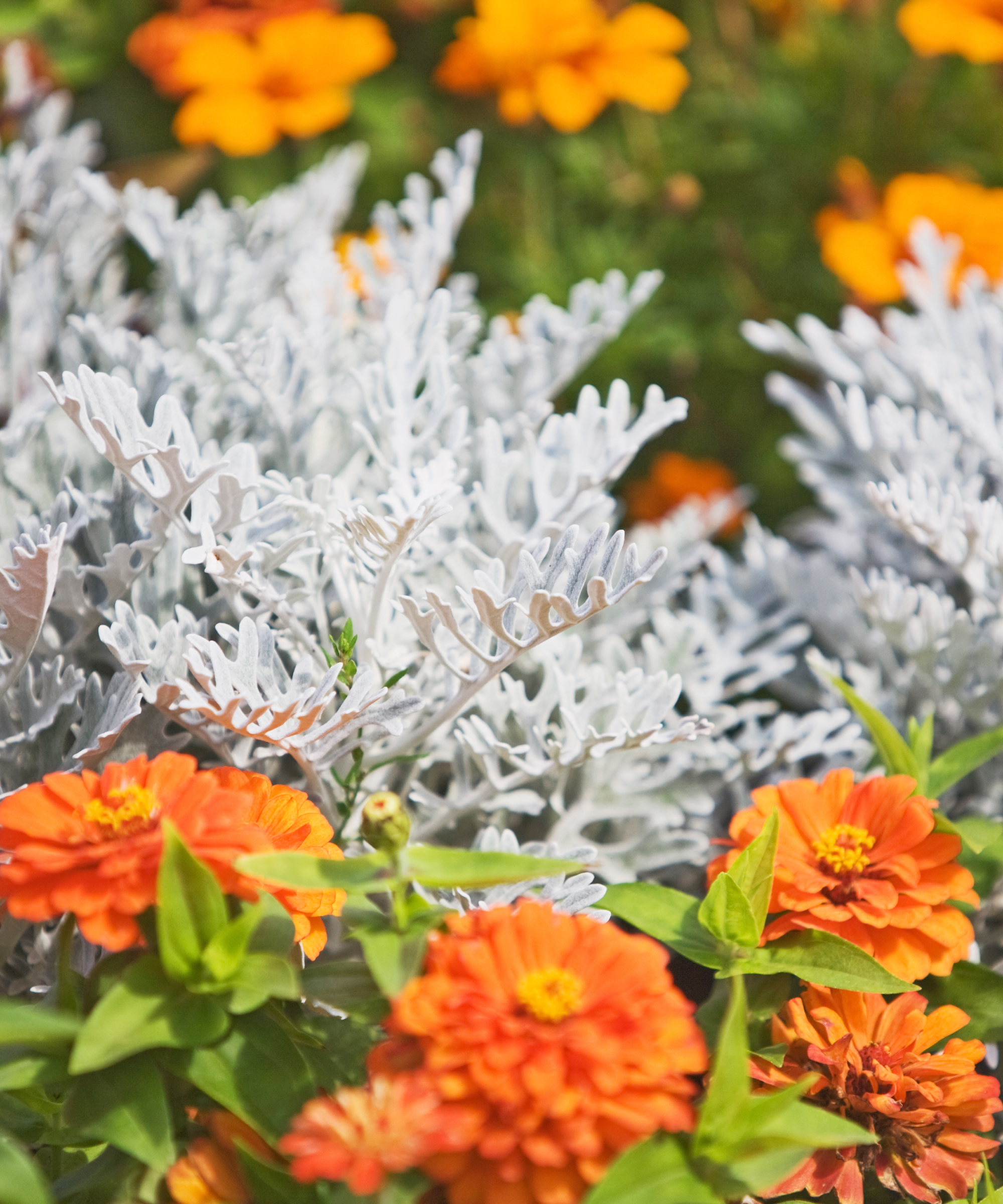
Best Ornamentals to Plant with Zinnias
Zinnias pair beautifully with many flowers and ornamental shrubs, especially those that thrive in full sun and well-drained soil. Their upright growth and colorful blooms make them a natural fit for mixed borders or pollinator gardens. Top zinnia companions include:
Sign up for the Gardening Know How newsletter today and receive a free copy of our e-book "How to Grow Delicious Tomatoes".
- Cosmos are pollinator magnets and love similar conditions to zinnias. Together, they create a wild, romantic feel in the garden and make a perfect pairing for a cut flower garden. The Cosmos Sensation Mix from Burpee has a dainty daisy look that looks great with zinnias.
- Calendula blooms just as profusely as zinnias, adding vibrant pops of color while drawing in beneficial insects. It's also a therapeutic plant that's edible, so it adds another dimension to flower beds. This Medicinal & Herbal Tea Seeds Variety Pack from Amazon includes calendula as well as 14 more therapeutic plants to grow.
- Dusty miller has silvery foliage that creates a stunning contrast with the bright colors of zinnia flowers, and acts as a foil. It grows close to the ground, so it is a good option for edging. Dusty Miller Silver Lace, from Burpee, is a beautiful, finely cut variety with delicate lacy foliage.
- Marigolds share similar growing conditions to zinnias and can help deter pests that might bother zinnias. However, don't crowd them or they'll compete. Pick up these live margiold plants from Walmart.
- Petunias are ideal for bedding arrangements with dwarf zinnia varieties. Their spreading habit complements the upright form of zinnias. Proven Winners' Multicolor Supertunia Picasso in Purple, from Lowe's, is a stunning variety with lime green edges that doesn't need deadheading.
- Salvia attracts pollinators and comes in a variety of colors that complement zinnias. May Night salvia, from FastGrowingTrees.com is a long-flowering variety that is drought tolerant and deer resistant.
- Snapdragons love similar growing conditions to zinnias, and add vertical interest and a mix of textures when planted together. Burpee's Tutti Frutti snapdragons offer a fun mix of colors to complement zinnias and are perfect for cutting.
Zinnias can also be used to protect more delicate ornamental shrubs like roses and lilacs, helping to draw away pests such as Japanese beetles, while attracting natural predators to handle infestations organically.
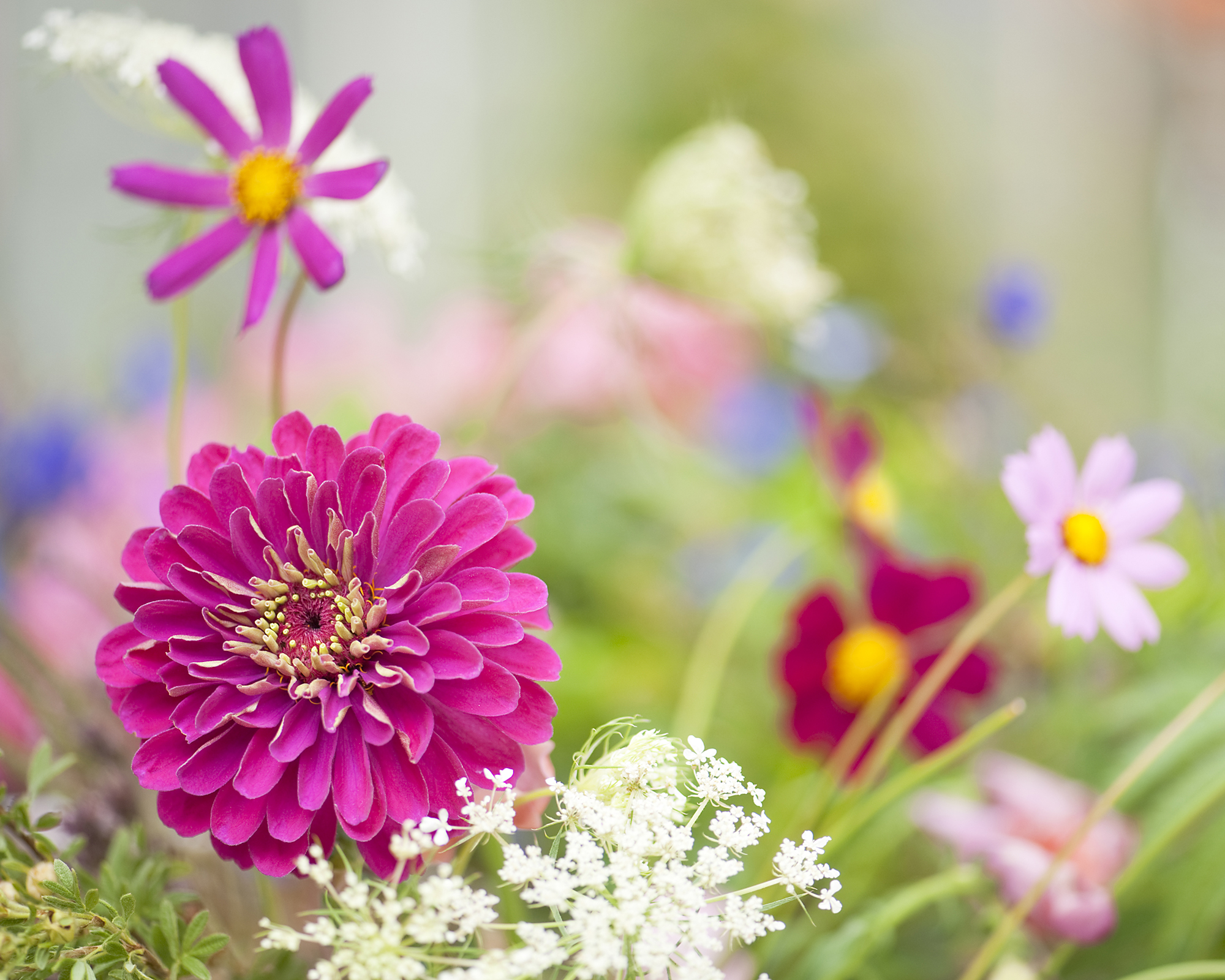
Best Vegetables to Plant with Zinnias
Zinnias are often found growing throughout vegetable gardens, and for good reason. Their unique ability to attract pollinators and beneficial insects has a positive effect on the health and production of nearby crops.
Here are some vegetables that pair especially well with zinnias:
- Tomatoes benefit greatly from zinnias as the flowers attract predatory insects that feed on tomato hornworms. They also help improve pollination and can help reduce other pest problems.
- Cucumbers and other cucurbits love having zinnias planted close by as the flowers help deter cucumber beetles, a notorious pest for squash, pumpkins, and melons.
- Peppers planted with zinnias can benefit from improved fruit set by attracting bees and other pollinators.
- Beans and corn benefit from increased pollinator visits and look just beautiful alongside zinnia flowers' bold hues.
Zinnias' pest-diversion benefits also mean they can be used near crops that are particularly vulnerable to beetles or aphids – making them a simple and natural form of pest management.
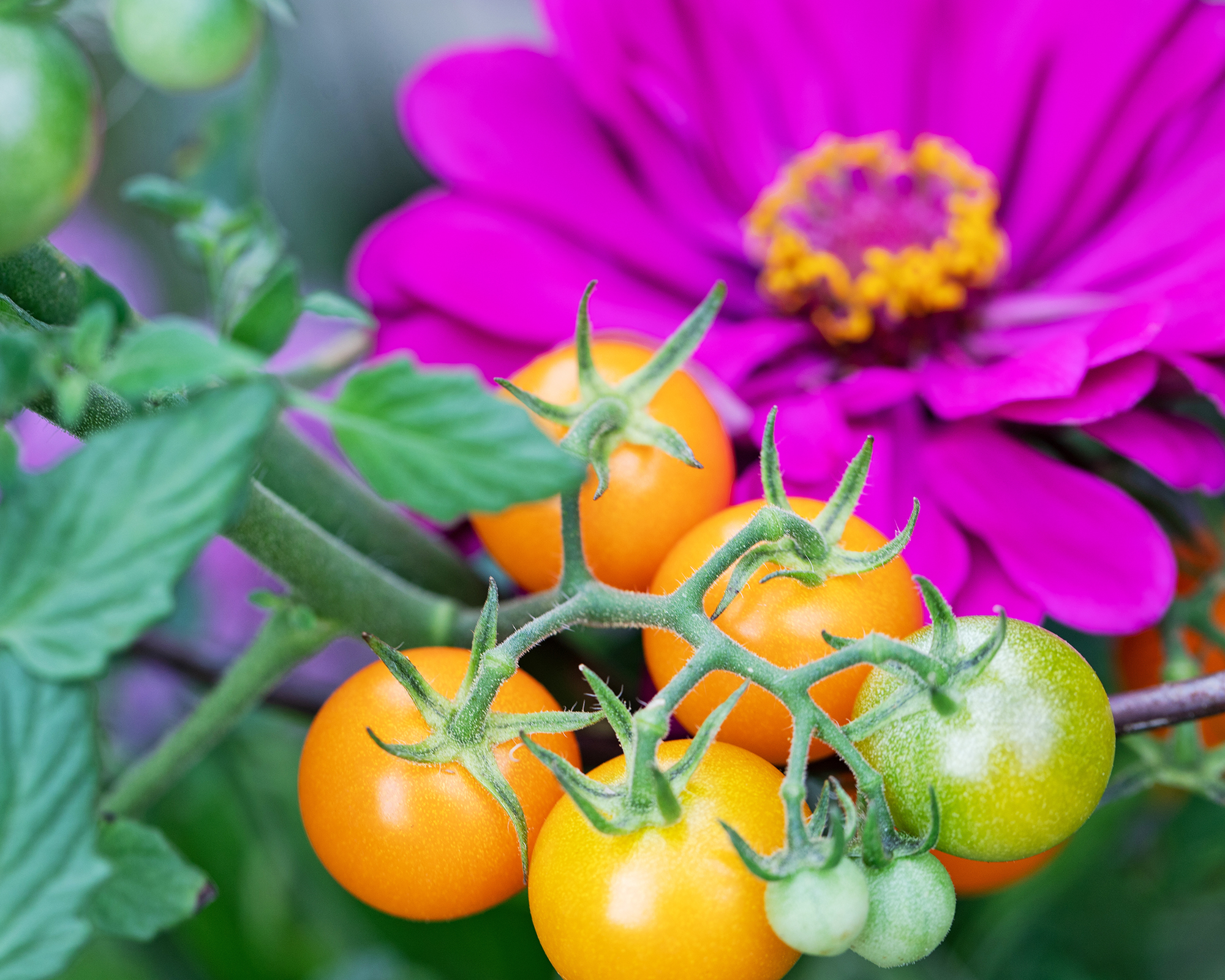
What Not to Plant with Zinnias
Zinnia plants will grow well with most any companion. However, there are a few things to keep in mind when deciding what to plant near them. Zinnias need full sun, good air circulation, and room to grow upright without being crowded. You need to consider their overall size at maturity and rate of growth.
Avoid planting them too close to plants that spread aggressively or overshadow them. This includes fast-spreading ground covers or tall, bushy vegetables like kale, broccoli, or zucchini if space is limited.
Overcrowding can lead to poor airflow, increased susceptibility to powdery mildew, and reduced flowering.
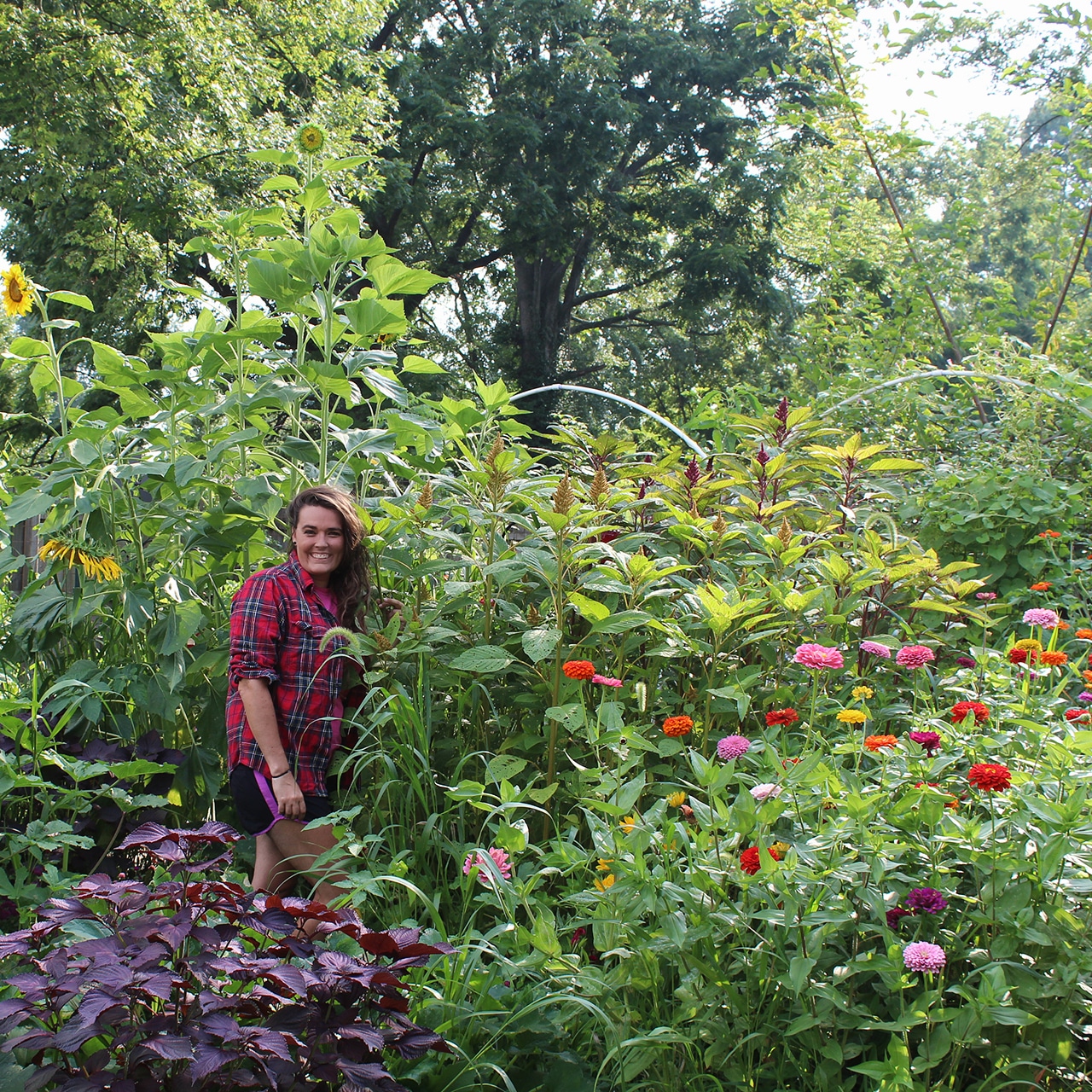
Tonya Barnett has been gardening for 13 years. Flowers are her passion. She has transformed her backyard into a cut flower garden, which she regularly chronicles on her YouTube channel http://www.youtube.com/@tonyawiththeflowers.
